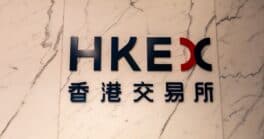Michael Vrontamitis and Daniel Cotti of T3i Partner Network speak to Global Finance about being leaders in trade finance as innovation transforms the space.
Global Finance: What were the main changes for trade finance in 2023?
Michael Vrontamitis: Last year, the United Kingdom marked a significant milestone by approving the Electronic Trade Document Act, making it the first G7 nation to enact this crucial legislation. This move aligns with the recommendations proposed in 2017 by the United Nations Commission on International Trade [UNICITRAL] through its Model Law on Electronic Transferable Records [MLETR].
Prior to the UK, only six countries—Papua New Guinea, Belize, Kiribati, Bahrain, Paraguay and the Abu Dhabi Global Markets in the United Arab Emirates—along with Singapore, had adopted laws in line with the MLETR.
Regarded as one of the most important laws ever approved despite being largely unknown to the wider public, the UK Electronic Trade Document Act represents a landmark moment for international trade. This legislation transforms essential documents, such as the bill of lading [a bearer tool for consigning goods], as well as bills of exchange and promissory notes, into digital assets. Digital signatures replace traditional “wet ink” signatures, making international trade more accessible, cost-effective and secure. This act will provide a pivotal foundation for the advancement of digital trade.
Several other countries, including India, China and Japan, have demonstrated keen interest in the MLETR and are studying its potential adoption. Other nations are in advanced stages of adoption, such as Germany, France and the United States [similar laws have already been enacted in 11 states, with 17 others considering them, including New York]. The year 2023 held particular significance, as a major economy—the UK—spearheaded this transformative movement, offering momentum on the international stage.

GF: What are some other important themes?
Vrontamitis: In 2023, the second significant theme was the rise of generative AI. While still in its early stages, I believe that generative AI will play a crucial role in advancing the digitalization of trade finance. The key factor for digitalization is adoption, and AI is poised to make this process more cost-effective and efficient than ever before. Tasks that once took 18 months for adoption can now be accomplished in a significantly shorter time frame, showcasing the transformative impact of artificial intelligence.
The third and final noteworthy theme in 2023 spanned various product sets globally, highlighting a reduction in the number of unprofitable ventures.
GF: Was this part of a consolidation process?
Vrontamitis: There were a lot of good digitalization initiatives that were able to generate positive cash flows, but eventually investors got tired of funding them. We saw actual bankruptcies. By 2023, the spotlight shifted toward sustainable ventures, a transition that is still unfolding. We anticipate the disappearance of several ventures in the coming months and years as investors will re-evaluate the created value and make tough decisions.
GF: Could you elaborate on the reasons behind these bankruptcies?

Vrontamitis: If you go back to 2018 or 2019, everybody was asking, “What’s your blockchain project?” And if you had a blockchain project, you could raise a lot of money. These projects are now folding because in most cases they weren’t solving real problems. The second reason is that they often picked the technology before they picked the problem. Most of the ventures just failed on all those on those parts.
Daniel Cotti: The trade industry is currently undergoing a significant and prolonged transformation, with trade digitalization unfolding as an evolutionary rather than a revolutionary process. Over the past few years, we’ve learned six crucial lessons:
1. Blockchain is not a one-size-fits-all solution.
2. Horizontal solutions are currently lacking.
3. Profitability requires more than just technology.
4. Partnerships are essential for fortifying horizontal layers.
5. People play a pivotal role.
6. Legal frameworks are progressively favoring digitalization.
For meaningful mass participation, a widely accepted digital framework instilling confidence among all parties is imperative. Without it, only a handful of trailblazers will explore innovative approaches.
The pieces of the puzzle are beginning to fall into place. Michael and I see significant developments in crucial aspects such as the legal framework and new technology. The market recognizes that conquering the world alone, reminiscent of the days of Marco Polo or Christopher Columbus, are outdated. Success now hinges on cooperation, collaboration and bringing the right parties together to create value added to end-to-end solutions.
GF: What’s involved when we talk about the digitization process of trade finance?
Vrontamitis: When we talk about digitalization in trade finance, we must consider at least three different buckets. Bucket one is what I would call documentary credits, or traditional trade finance. Bucket two is guarantees and securities. Bucket three would be invoice financing, supply chain finance and open account finance.
In the last bucket, invoice finance, there has already been a lot of digitization. In fact, most supply chain finance businesses are already digital have been digital from pretty much day one, in the early 2000s. The same is true in the receivable finance business. A lot of the receiver finance designed for large multinational corporates is already digitized. The truth is that a large chunk of trade finance has been already digitized.
The second bucket—the guaranteed space—is interesting because we haven’t seen a lot of digitizing and there is really an opportunity to do that; especially with digital vault services for Guarantee Vaults.
Then you have the whole traditional trade finance space—the first bucket—where essentially banks are receivers of information from shipping companies, logistics companies and clients. This is highly paper-intensive today, so we have different stages of evolution of digitization, For banks, is about being providing information electronically.
GF: What is your outlook for 2024?
Vrontamitis: Generative AI is poised to witness widespread adoption within financial institutions. This trend began gaining traction in 2023, and the coming year should see a significant surge in its utilization. Particularly in Europe and the United States, where advancements in this field are more pronounced, numerous players are likely to incorporate generative AI solutions into their operations.
Financial institutions will increasingly invest in and acquire Gen AI solutions, with the next 12 to 18 months being a critical period for implementing and leveraging the capabilities and toolkits offered by these innovative technologies. The adoption of generative AI is likely to bring about transformative changes within the financial sector, enhancing efficiency and decision-making processes.
GF: Is this set to increase the number of players?
Vrontamitis: Technological advancements are reshaping processes and enhancing capabilities, making them more cost effective. This democratization of technology enables smaller players to actively participate in the market. Simultaneously, larger players stand to gain substantial benefits, leveraging their extensive resources to navigate transformative changes and continually reduce costs—even through layoffs, if necessary.
In the realm of generative AI, early adopters among new market entrants are poised to secure a significant market share. The overall effect will be a surge in competition, fundamentally altering the landscape over the next 36 months. As technology continues to evolve, both established and emerging players will need to adapt swiftly to stay competitive in this dynamic environment.
GF: Can you anticipate what will be successful structures?
Cotti: The industry is grappling with the challenge of developing solutions that fully leverage the new legal framework and integrate it into business models with a sufficiently broad value proposition to encourage widespread adoption. The landscape of trade financing is incredibly fragmented, with numerous providers, thousands of fintechs, thousands of banks and millions of users worldwide. Given this complexity, the critical question remains: Which new solutions will have a substantial impact on the industry and attract significant volumes? It’s an open question, and as of now, there isn’t a definitive answer.
GF: What major risks might be in store for trade and trade finance in the next twelve months?
Vrontamitis: The landscape will witness the continued disappearance of technology companies in this space. Ongoing supply chain disruptions are a prevalent issue in the current market scenario, and this trend is expected to persist. Anticipating a decrease in inflation and interest rates, there’s a potential for increased risks and reduced costs in trade. However, global trade faces persistent risks, especially in key locations like the Suez Canal and the Panama Canal, posing challenges for the global economy.
The ongoing trend of nearshoring, driven by geopolitical concerns, is likely to persist as a negative factor impacting trade. On a positive note, the advancements in digitization and artificial intelligence offer avenues for productivity gains, potentially offsetting these challenges. While there’s hope that the positives will outweigh the negatives, the path forward is not without its complexities.



